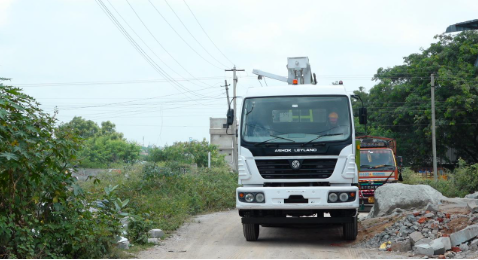It would also be useful to note that a construction project cannot be successful without selecting the appropriate drill rigs and drilling equipment. This choice affects the overall effectiveness, expenses, and schedules of the project. Knowing the main determinants of this selection can assist contractors and construction managers in making well-informed choices that meet the needs of their projects.
The project’s application and requirements:
Before spending money on drilling equipment, it’s critical to carefully assess the particular requirements of your project. The drilling capabilities needed for various construction drilling equipment differ. Compact, more manageable equipment may be more suitable for utility installation tasks, whereas large rotary drilling rigs may be necessary for foundation work. For the equipment to deliver long-term value, take into account the size of ongoing projects and any future uses. You should choose your equipment largely based on the geological features, soil conditions, and drilling depth needs of your regular work areas.
Mobility and Site Access Factors to Consider:
The physical attributes of your building sites are important when choosing the right equipment. A few things to think about include space limitations, topographical conditions, and site accessibility. For some tasks, smaller, more agile rigs that can work in tight locations are necessary, while larger, more potent equipment may be more advantageous. The need for transportation between locations should also be taken into consideration since certain drill rigs need specific equipment or permissions to be mobilized. Project efficiency may be greatly impacted by setup time and assembly simplicity at new sites.
Maintenance Needs and Operating Expenses:
The original purchase price is only one part of the overall cost of ownership. Take fuel economy, upkeep needs, and replacement component availability into account. Efficient power management systems and fuel-saving technologies are frequently integrated into modern drilling equipment to lower running expenses. Service intervals, regular maintenance plans, and the availability of trained specialists in your area should all play a role in your decision. Downtime and maintenance expenses can be greatly impacted by the manufacturer’s dependability and their network of post-purchase assistance.
Features of Safety and Adherence to Regulations:
It is always important to prioritize safety while choosing drilling equipment. Modern construction drill rigs should have basic safety features including noise reduction technology, operator protection structures, and emergency shutdown systems. International and local safety requirements and regulations must be met by the equipment. Examine the operator’s station’s ergonomics and the existence of safety features that safeguard both ground staff and operators. Workers are protected by equipment that satisfies or beyond safety standards, which also helps to prevent expensive mishaps and legal problems.
Aspects of the Workforce and Training Needs:
Different drilling equipment types demand varying levels of knowledge to operate and maintain. Analyze the skills of your present personnel and consider the training needs for new equipment. Certain sophisticated drilling systems call for specific certification and training for operators. The time needed to train new employees and the availability of qualified operators in your area should be taken into consideration when making your choice. Reducing training expenses and maintaining productivity can be achieved using equipment that complements the skills of your employees.
Conclusion:
The future flexibility of drilling equipment is a critical consideration in the ever-changing construction sector of today. Look for equipment that can be adjusted or upgraded to meet evolving project requirements and new technology. Data collecting, performance monitoring, and project management system integration are all made possible by the digital integration features that many modern drill rigs have. Even though these features may cost more upfront, they can yield significant long-term gains through increased productivity and data-driven decision-making.
